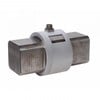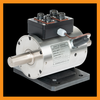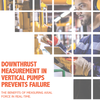OVERLOAD/OVERRANGE - WHAT’S THE DIFFERENCE?
Featured Product from S. Himmelstein & Company
Two easily overlooked, yet extremely critical parameters when evaluating and specifying torque transducers are – Mechanical Overload Rating and Electrical Overrange. Each is important, but often confused and misunderstood.
Overload – represents a mechanical safety factor for the sensor element. Normally expressed as a percentage of the sensor full scale rating, it is the maximum load limit of the sensor before yield or physical deformation. S Himmelstein and Company products are available in a variety of overload ratings – typically either 200%, 400% or even 1,000%.
Overrange – is a parameter that relates to the sensors’ electrical output signal. Also expressed as a percentage of the sensor full scale rating, it represents how far the output voltage will extend beyond full scale. The majority of S. Himmelstein and Company sensors now incorporate integrated signal conditioning electronics for processing of the sensor strain gage signal.
Click here to read the article in full.
About S. Himmelstein:
Established in 1960, S. Himmelstein and Company makes the worlds best sensors and data acquisition systems. Company innovations have created many advances in sensor technology. We design, manufacture and test these products in Hoffman Estates, Illinois where complete machine shop, surface mount, test and engineering facilities permit control of the manufacturing process.









